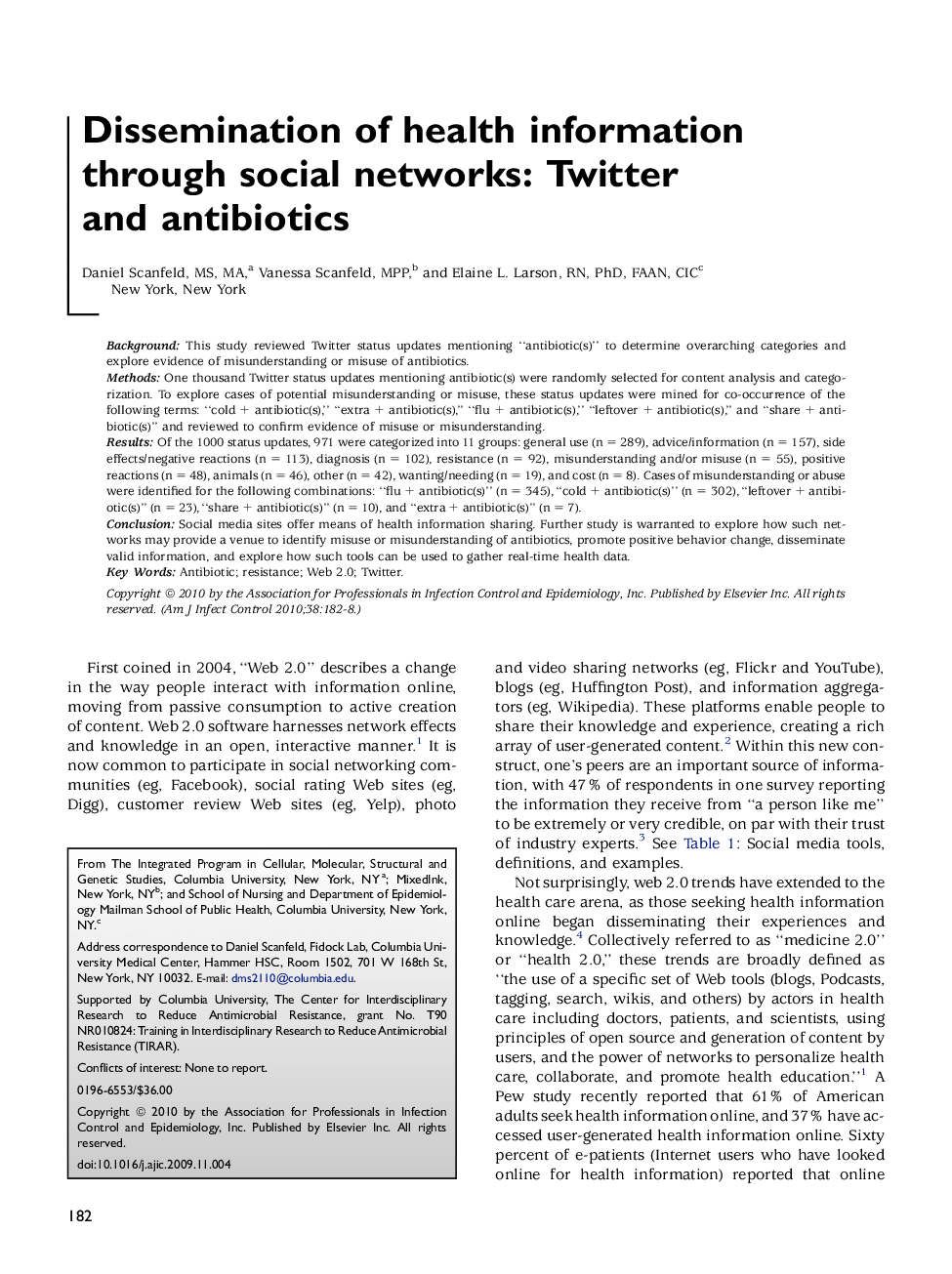| Article ID | Journal | Published Year | Pages | File Type |
|---|---|---|---|---|
| 2639797 | American Journal of Infection Control | 2010 | 7 Pages |
BackgroundThis study reviewed Twitter status updates mentioning “antibiotic(s)” to determine overarching categories and explore evidence of misunderstanding or misuse of antibiotics.MethodsOne thousand Twitter status updates mentioning antibiotic(s) were randomly selected for content analysis and categorization. To explore cases of potential misunderstanding or misuse, these status updates were mined for co-occurrence of the following terms: “cold + antibiotic(s),” “extra + antibiotic(s),” “flu + antibiotic(s),” “leftover + antibiotic(s),” and “share + antibiotic(s)” and reviewed to confirm evidence of misuse or misunderstanding.ResultsOf the 1000 status updates, 971 were categorized into 11 groups: general use (n = 289), advice/information (n = 157), side effects/negative reactions (n = 113), diagnosis (n = 102), resistance (n = 92), misunderstanding and/or misuse (n = 55), positive reactions (n = 48), animals (n = 46), other (n = 42), wanting/needing (n = 19), and cost (n = 8). Cases of misunderstanding or abuse were identified for the following combinations: “flu + antibiotic(s)” (n = 345), “cold + antibiotic(s)” (n = 302), “leftover + antibiotic(s)” (n = 23), “share + antibiotic(s)” (n = 10), and “extra + antibiotic(s)” (n = 7).ConclusionSocial media sites offer means of health information sharing. Further study is warranted to explore how such networks may provide a venue to identify misuse or misunderstanding of antibiotics, promote positive behavior change, disseminate valid information, and explore how such tools can be used to gather real-time health data.
